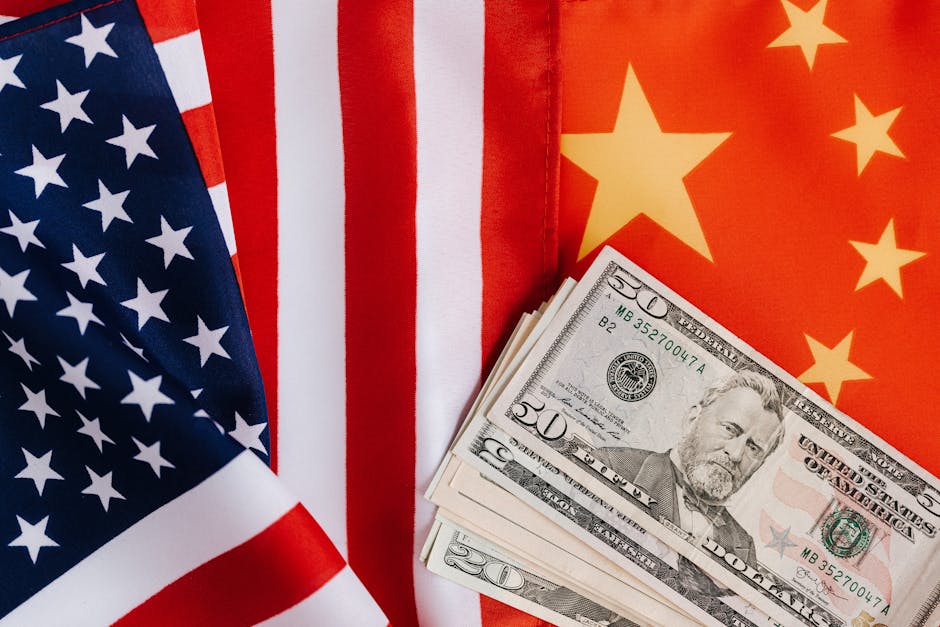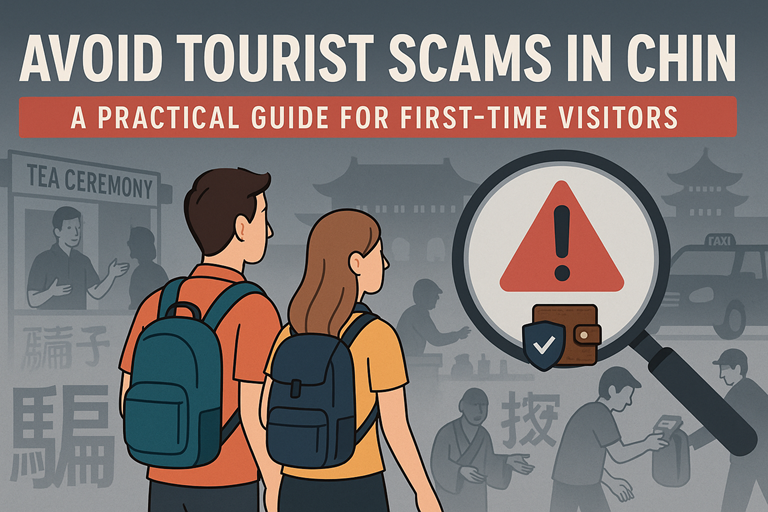Understanding Chinese Yuan (RMB): Currency Exchange, ATMs, and When to Use Cash

Chinese Yuan (RMB) banknotes feature Mao Zedong on all denominations
Navigating a new country’s currency and payment systems is a fundamental part of travel planning. In China, while a massive shift towards digital and mobile payments has occurred, understanding and using physical cash – the Renminbi (RMB) – remains important for international visitors, especially for certain situations and as a reliable backup. This guide will walk you through the basics of the Chinese Yuan, how to exchange your currency, withdraw cash from ATMs, and when physical money will be your go-to.
I. Getting to Know the Renminbi (RMB): The Basics
Official Name
The official name of China’s currency is Renminbi (人民币), which translates to “People’s Currency.”
Currency Code
The international currency code is CNY. You might also see RMB used informally.
Unit
The basic unit of the Renminbi is the Yuan (元).
Colloquial Terms
In everyday spoken Mandarin, “Yuan” is often referred to as “Kuài” (块).
Sub-units
One Yuan is divided into 10 Jiǎo (角). Colloquially, Jiao is often called “Máo” (毛).
One Jiao is further divided into 10 Fēn (分). Fen coins and notes are rarely used today due to their extremely low value, though prices may still sometimes be displayed with Fen (e.g., ¥9.99).
So: 1 Yuán = 10 Jiǎo (Máo) = 100 Fēn.
Symbol
The currency symbol is ¥.
Common Banknote Denominations
It’s helpful to familiarize yourself with the appearance of Chinese banknotes. The current main series features Mao Zedong on the front of all Yuan denominations:
This is the largest denomination banknote.

Common Chinese coins include ¥1, ¥0.5 (5 Jiǎo), and ¥0.1 (1 Jiǎo)
Identifying Genuine Currency
While counterfeit currency isn’t a widespread daily concern for most, it’s good practice to be aware:
- Genuine notes have a distinct texture, clear portraits, watermarks (Mao Zedong’s head and the denomination number), a security line, and areas with raised ink.
- ATMs at reputable banks are the safest source of genuine notes.
II. Obtaining Chinese Yuan: Currency Exchange
You have several options for exchanging your home currency into Chinese Yuan.
Before You Arrive:
- Some banks in your home country may offer CNY for exchange, but the rates might not be the most favorable, and availability can be limited.
- It can be convenient to have a small amount of RMB on hand for immediate expenses upon arrival (e.g., taxi, snacks) before you can get to a bank or ATM in China.

Currency exchange counters are available at major banks and airports in China
Upon Arrival in China:
Airports
Major international airports (e.g., Beijing, Shanghai, Guangzhou) have currency exchange counters (often run by banks like Bank of China or Travelex). Rates are generally less competitive than in city banks but offer immediate convenience.
Banks
This is generally the best option for favorable rates and security. Bank of China (中国银行 – Zhōngguó Yínháng) is the most experienced in handling foreign exchange and is widely recommended for tourists.
Other major banks like Industrial and Commercial Bank of China (ICBC), China Construction Bank (CCB), and Agricultural Bank of China (ABC) also offer exchange services.
Look for a “Currency Exchange” (货币兑换 – Huòbì Duìhuàn) sign.
Banking hours are typically Monday to Friday, 9:00 AM to 5:00 PM, with some branches offering weekend hours.
Hotels
Many larger hotels (3-star and above) offer currency exchange services for their guests. The rates are usually less favorable than banks but can be convenient.
Licensed Money Changers
These are less common in China compared to some other countries and are generally found in very tourist-heavy areas or specific financial districts. Ensure they are officially licensed if you consider this option. Avoid unlicensed street money changers.
What You’ll Need for Currency Exchange:
- Your original passport is always required for currency exchange transactions at banks or official counters.
- You may need to fill out a small form.
Understanding Exchange Rates & Fees:
Exchange rates fluctuate daily. Banks display “buy” and “sell” rates.
Some banks or exchange counters might charge a commission fee, while others build it into the rate. Always clarify any fees beforehand.
It’s wise to compare rates if possible, but for most tourists, the security and reliability of a major bank are paramount.
Tips for Exchanging Currency:
- Exchange a moderate amount at a time to avoid carrying too much cash.
- Keep your exchange receipts. You will need these if you plan to exchange any leftover RMB back into your home currency before departing China (see below).
- If possible, ask for some smaller denomination notes (¥50, ¥20, ¥10) as breaking a ¥100 note for small purchases can sometimes be inconvenient.
Exchanging RMB Back to Foreign Currency:
- You can exchange unused RMB back into your home currency at major banks (like Bank of China) or at exchange counters at the airport before departure.
- You must present your original currency exchange receipts from when you converted foreign currency into RMB. There are limits on how much RMB can be converted back without these proofs, and for amounts converted from undocumented sources.
- This process can sometimes be more time-consuming, so allow extra time at the airport if doing it there.
III. Using ATMs in China for Cash Withdrawals
ATMs are widely available in Chinese cities and towns, offering a convenient way to withdraw RMB directly from your bank account.

Most ATMs at major Chinese banks offer English language interfaces
Availability and Accessibility
You’ll find ATMs at bank branches, in shopping malls, airports, train stations, and other public areas.
Which Cards Work?
Most ATMs in China accept international cards linked to major networks like Visa, Mastercard, Maestro, Cirrus, and Plus. Look for the logos of these networks displayed on the ATM.
Important: It’s crucial to inform your home bank before you travel about your plans to use your card in China. Failure to do so might result in your card being blocked for suspected fraudulent activity. Also, inquire about their international withdrawal fees.
Finding an ATM
ATMs belonging to major Chinese banks are generally reliable:
- Bank of China (BOC)
- Industrial and Commercial Bank of China (ICBC)
- China Construction Bank (CCB)
- Agricultural Bank of China (ABC)
- Bank of Communications (BoCom)
- China Merchants Bank (CMB)
Many ATMs will have an “ATM” sign, and those that accept international cards usually display the relevant network logos (Visa, Mastercard, etc.).
Language Options on ATMs
Most ATMs at major banks, especially in tourist areas, offer an English language interface. You can usually select the language on the welcome screen.
Withdrawal Process
Similar to using an ATM anywhere: Insert card, select language, enter PIN, choose “Withdrawal” (取款 – Qǔkuǎn), select account type (usually “Savings” or “Credit”), enter amount, take cash, card, and receipt.
PIN Note
Chinese ATMs typically expect a 6-digit PIN. If your PIN is 4 digits, it usually works fine. If you encounter issues, check with your bank if a 6-digit PIN is needed or if there’s a specific way to enter it.
Withdrawal Limits
- Per Transaction: Chinese ATMs often have a limit per single withdrawal (e.g., ¥2,500 to ¥3,000, but can vary).
- Daily Limit: Your home bank will also impose a daily withdrawal limit for international ATM use. Check this before you travel. The Chinese bank may also have its own daily limit for foreign cards.
Fees for ATM Withdrawals
Your Home Bank
Will likely charge a foreign transaction fee and/or an international ATM withdrawal fee.
Local ATM Provider
Some Chinese banks might also charge a small fee for using their ATM with a foreign card, though many don’t. This is often displayed on screen before you complete the transaction.
Safety and Tips for ATM Use
- Use ATMs in well-lit, public areas or inside bank branches.
- Be aware of your surroundings.
- Shield the keypad when entering your PIN.
- If your card is captured or you have an issue, note the ATM number and contact the bank immediately.
- Keep withdrawal receipts.
IV. When and Where to Use Cash in China
This is where understanding the current payment landscape in China is crucial.

Many small vendors still accept cash despite China’s mobile payment dominance
The Dominance of Mobile Payments
China has rapidly become a society where mobile payments via Alipay (支付宝 – Zhīfùbǎo) and WeChat Pay (微信支付 – Wēixìn Zhīfù) are the overwhelming norm for locals. From high-end restaurants to street vendors, QR code payments are ubiquitous.
While efforts are continuously being made to improve the ability for foreigners to link international credit cards to these apps, it’s not always seamless, and some visitors may prefer or need to rely on other methods.
Why Cash is Still Important for Tourists
- Legal Requirement: Despite the digital shift, it is illegal for vendors to refuse cash (RMB) in China. The government has been re-emphasizing this to ensure convenience for those who prefer or need to use cash, including tourists and the elderly.
- Accessibility: Not all tourists can or want to set up mobile payments immediately or successfully.
- Reliable Backup: Cash is a reliable backup if your phone battery dies, you have internet issues, or your linked international card has a problem with the mobile payment apps.
Specific Scenarios for Using Cash
Small Vendors & Street Food
While many now have QR codes, some smaller, independent street food stalls, market vendors, or family-run shops (especially in less urbanized areas) may still operate primarily with cash or find it easier for small transactions with tourists.
Local Markets
Exploring traditional markets for souvenirs or local products might involve cash transactions.
Some Taxis
Most taxi drivers accept mobile payments, but having cash is a good backup, especially if there are issues with their payment device or if you’re in an area with poor signal. It’s good to have smaller notes for taxis.
Tipping
Tipping is generally not customary or expected in Mainland China (unlike Hong Kong or Macau). However, in some high-end tourist establishments or for exceptional personal service (like a private guide or driver you’ve hired for several days), a small cash tip might be appreciated but is not obligatory. Never feel pressured to tip.
Initial Expenses Upon Arrival
Before you’ve had a chance to set up other payment methods or get your bearings.
Places with Poor Connectivity
In remote or rural areas where internet/mobile signals might be weak, cash is king.
As a Dependable Backup
Always good to have some cash for unforeseen circumstances.
Situations Where Cash Might Be Less Convenient (but usually still accepted)
- Some very modern or automated services might be geared heavily towards app-based payment.
- Paying for a very small item with a ¥100 note might lead to a slight delay while the vendor finds change, as they might be used to exact digital amounts.
V. Practical Tips for Handling Cash in China

Organizing your cash by denomination makes transactions smoother
- Carry a Mix of Denominations: Having ¥10, ¥20, and ¥50 notes is useful for daily expenses. Keep a few ¥100 notes for larger payments or ATM withdrawals.
- Breaking Large Notes: You can usually break ¥100 notes at larger stores, supermarkets, restaurants, or your hotel.
- Counterfeit Currency Awareness: While less common from ATMs, if receiving change, glance at larger notes for basic security features. If a vendor seems hesitant to accept a note you give them, they might be checking it.
- Keeping Cash Secure: Use a money belt or secure wallet, especially in crowded areas. Don’t flash large amounts of cash.
- Budgeting: Plan how much cash you might need for short periods to avoid carrying excessive amounts.
VI. Conclusion
While China is at the forefront of digital payments, cash (Renminbi) remains a viable and often necessary payment method for international travelers. By understanding how to obtain RMB through exchange or ATMs and knowing when cash will be most useful, you can ensure smoother financial transactions during your trip. It’s advisable to carry some cash for convenience and as a backup, even if you plan to explore using mobile payment options.
Always check for the most current information regarding currency exchange and ATM usage before your departure, as banking policies and international agreements can evolve.

With proper preparation, handling cash in China can be stress-free and efficient
Enjoyed this article? Consider buying me a coffee to support more content like this!
💖 0 people have clicked to support this article.



